Help NYMRC Save Endangered Sea Turtles This Cold Stun Season
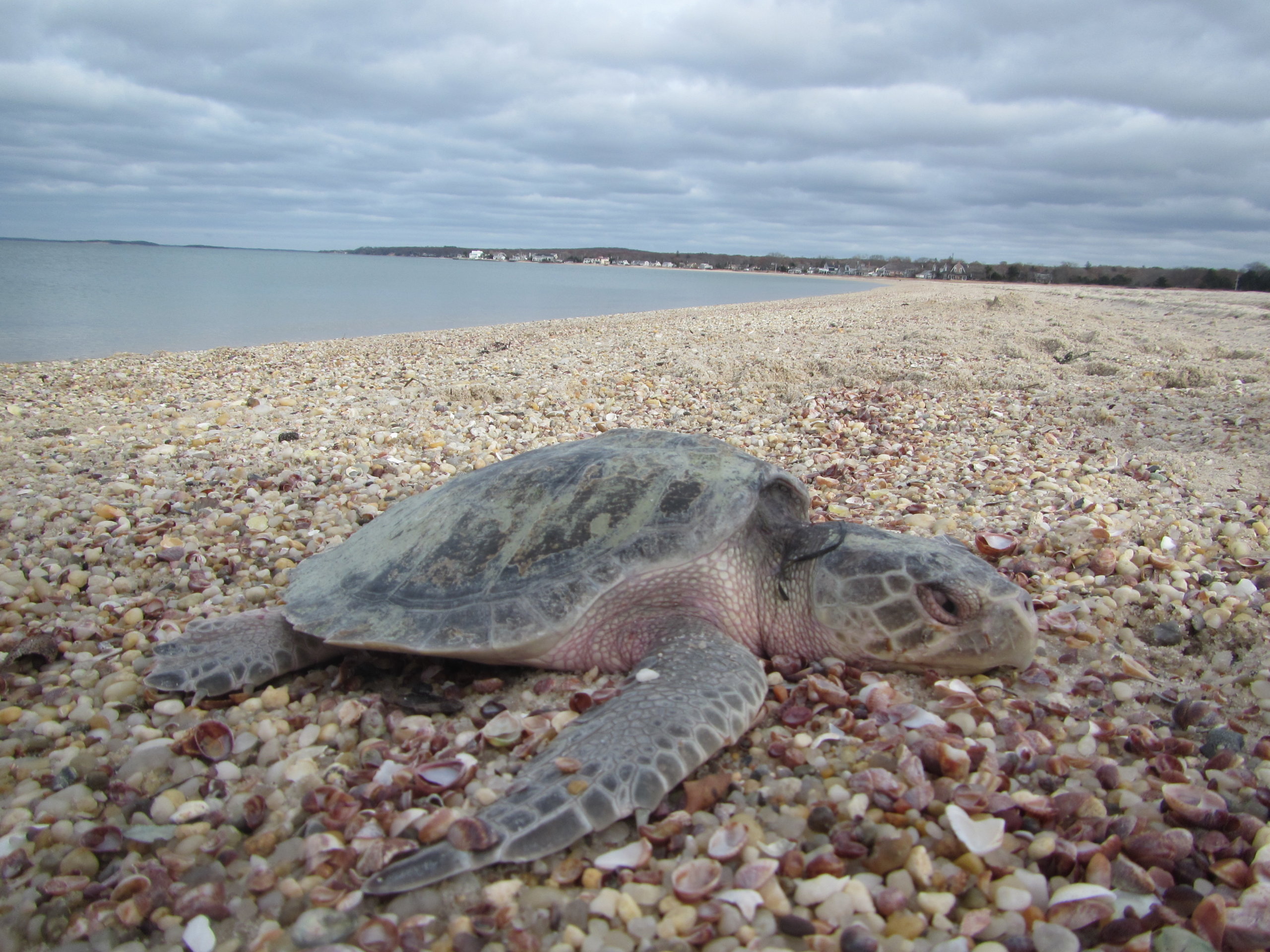
Each year, as the winter sets in on the East End, hundreds of threatened and critically endangered sea turtles find themselves cold stunned, unable to control their own bodies and inevitably washed ashore or floating helplessly with the tides as they become more compromised and eventually die. Thankfully, those deaths are widely preventable with human intervention from the team at Riverhead’s New York Marine Rescue Center (NYMRC) and their volunteers who patrol local beaches to find and rescue cold stunned turtles.
NYMRC Director Maxine Montello explains that cold stunning is similar to hypothermia, causing affected cold-blooded turtles to become catatonic and unable to swim or protect themselves. The phenomenon occurs along the Atlantic coast, from Virginia to Maine between November and January with three species of sea turtles, including, primarily, the endangered Kemp’s ridley sea turtle, as well as green sea turtles and the massive loggerheads, both of which are threatened.
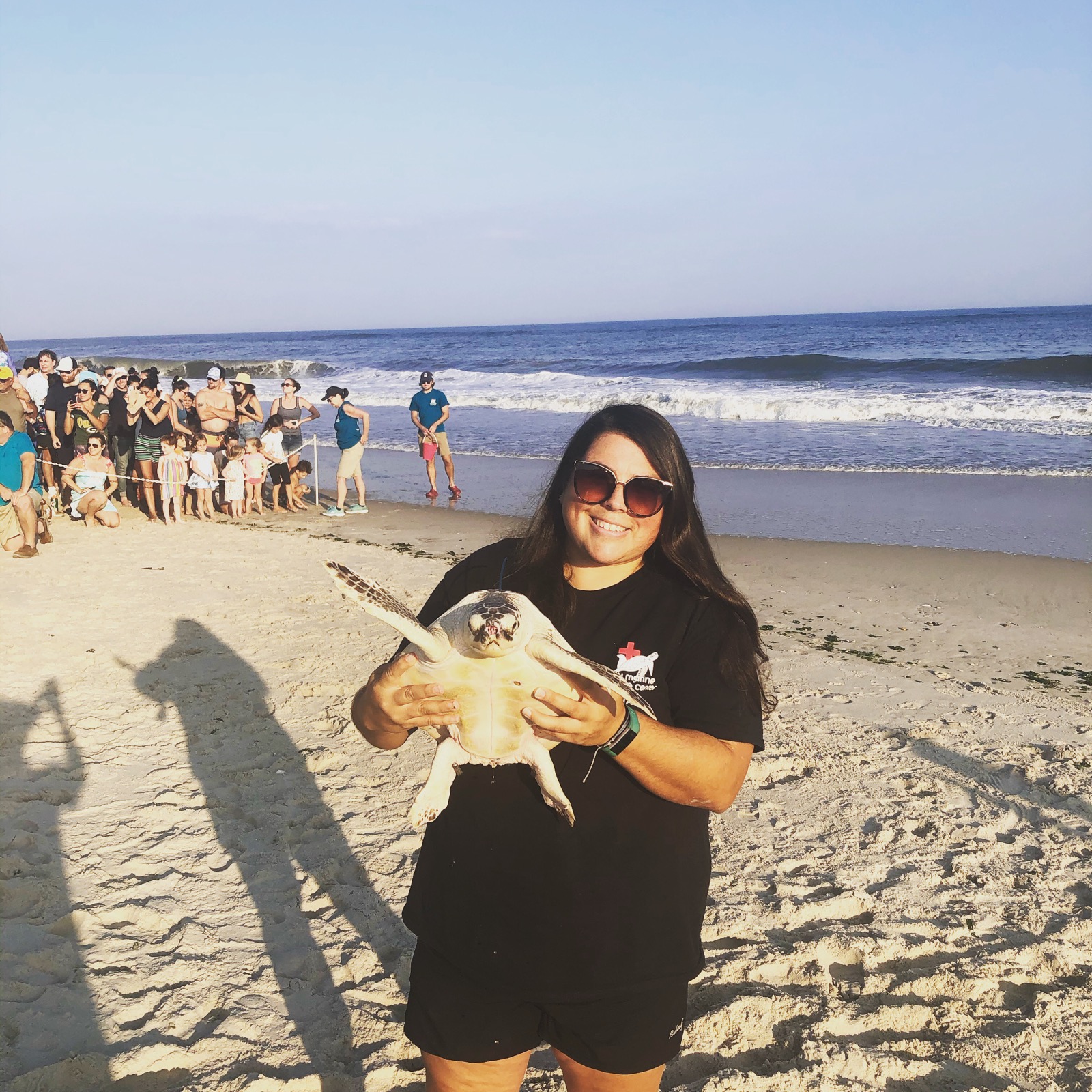
“They’re here all summer and we’re really lacking that seasonality between summer going into fall,” Montello says. “We’re really kind of going from summer right into winter, and because of that, these animals are not getting the environmental cues that they need to start moving out into warmer water,” she continues, adding that climate change has played a big part in the problem. “They stay here much longer and then they get exposed to these cold snaps which cause them to float to the surface and they become debilitated, and they really start slowing down, almost like a hibernation, really kind of cold shock.”
Then, if the turtles are lucky, the wind pushes them to shore where NYMRC team members and volunteers can find and safely revive them.
“It’s really critical for us to be able get these animals as soon as they strand, so we actually track our winds, our water temperature, as well as high tides,” Montello explains. “Our patrollers are walking the beaches looking for them in order to get them back to our facility as soon as possible to hopefully increase the chance of them surviving.”
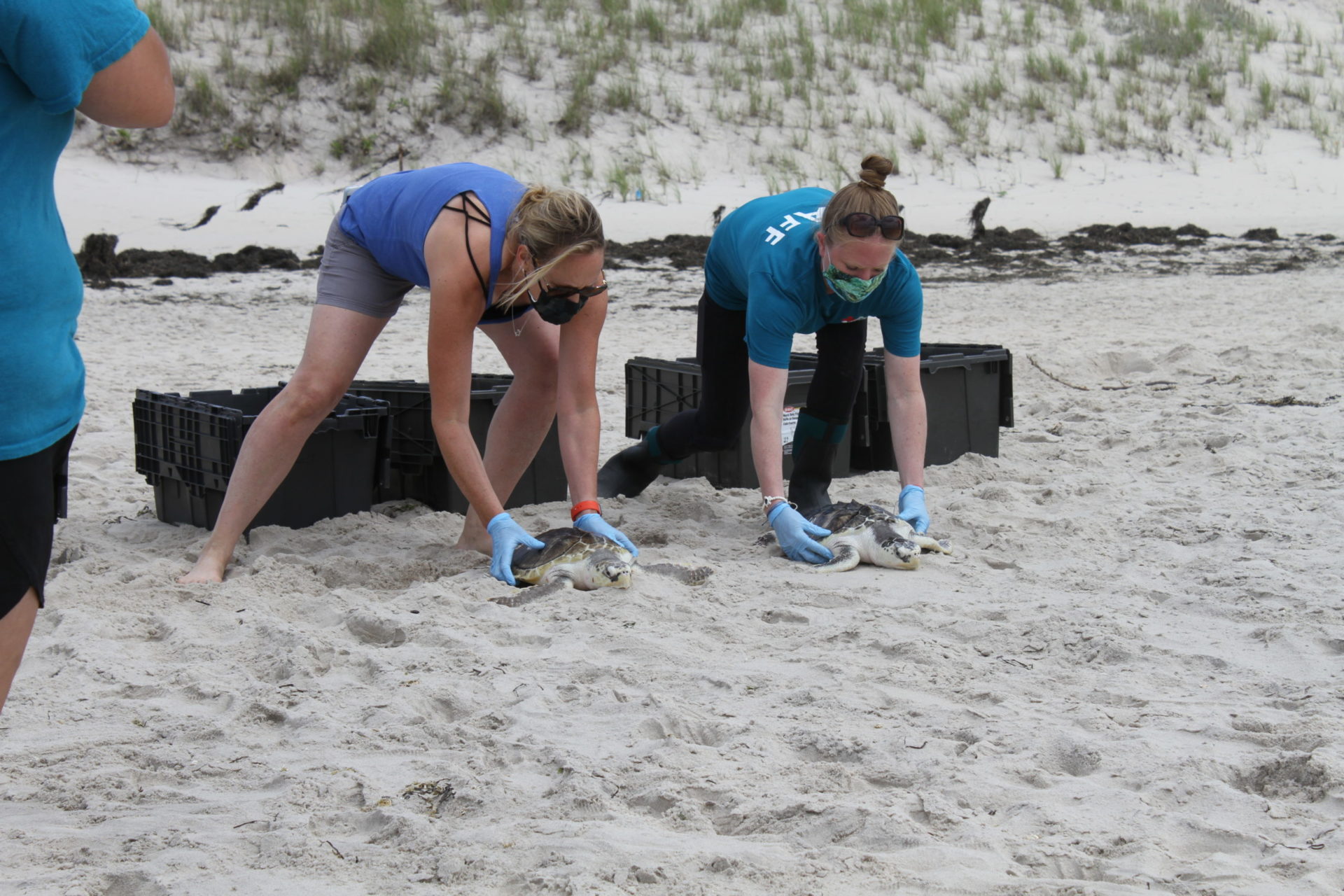
Since 2018, NYMRC has responded to nearly 300 sea turtles that have stranded locally and has accepted more than 100 turtles from Massachusetts, which has the most turtle strandings during cold-stun season. Typically, some 50% of cold stunned turtles are Kemp’s ridley, the most endangered and at-risk species.
While the organization welcomes help from anyone who wants to walk the beaches, they say it’s very important that untrained people don’t take matters into their own hands when it comes to reviving the turtles.
“If they see one in the water, we give permission to get those animals out of the water and above the high tide line, or the rack line,” Montello says, noting that they also encourage people to put any upside-down turtles back off their top shell and then call the NYMRC hotline at 631-369-9829. A responding biologist will immediately go out in the field to collect and help the distressed animal.
Montello says they will also ask people who find stranded turtles to take photos and provide NYMRC with a good location to retrieve that animal.
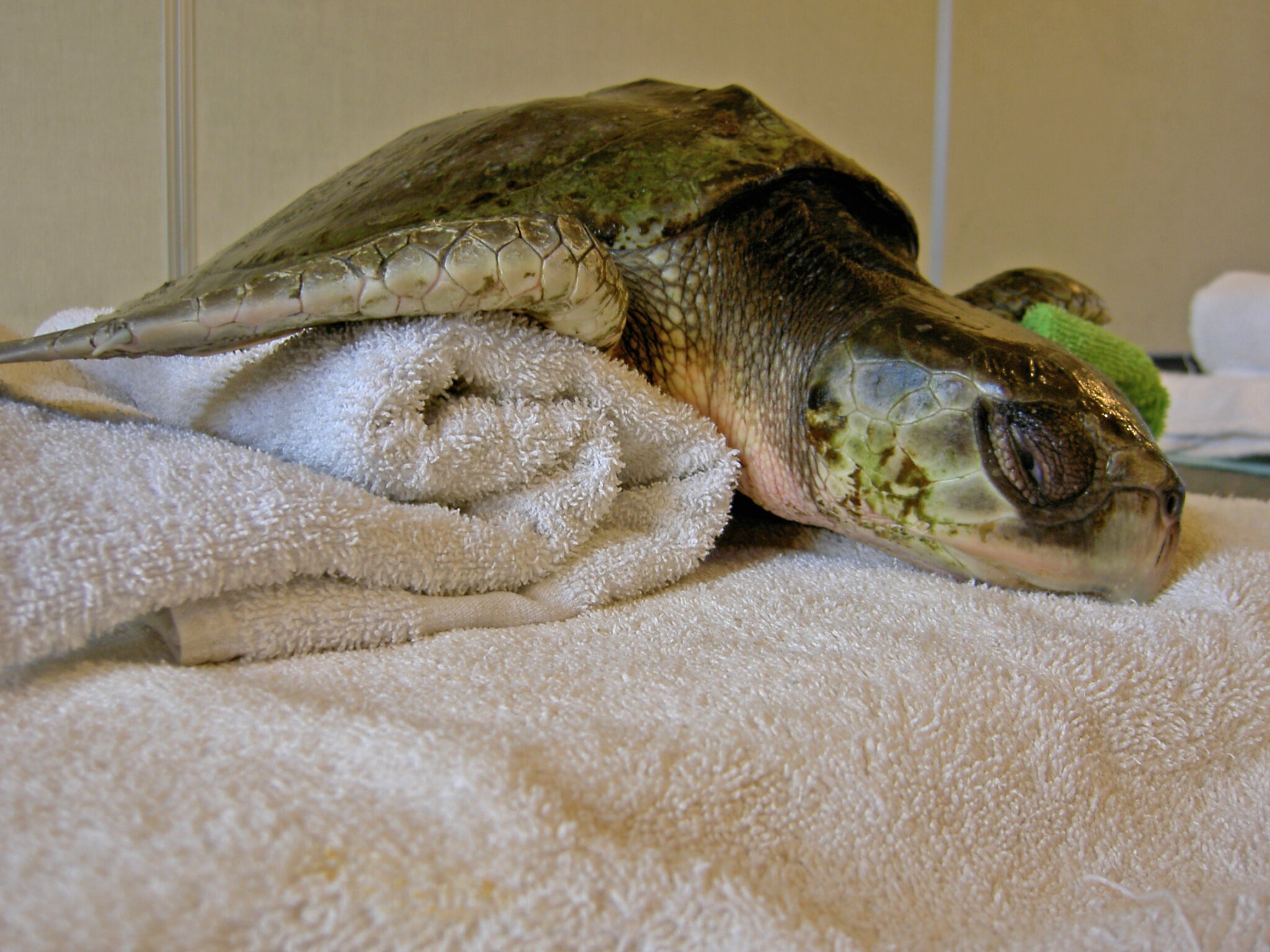
“The things we don’t want them to do, of course, is to warm them up too fast,” she points out. “It’s really good to keep them where they found them, not to bring them to their houses — don’t put them in a warm bath, don’t put them in your car. Because they’re reptiles, it’s actually better for them to be slowly warmed up over the course of a few days instead of being warmed up too fast where they may exhibit neurological issues.”
Ideally, the turtles want to be in water that’s 68° F and warmer, but cold stunning happens at about 55° F.
“Many of these animals come in with a heartbeat that’s like one beat per minute. They’re not breathing on their own, so we have to put a lot of emergency care into them before we can get them stable,” Montello says. “Even once we get them warmed up and they’re swimming on their own, we’re still dealing with these animals that probably haven’t eaten for months, and a lot of them have pneumonia and shell damage, so often they’re in our care for eight to nine months. We won’t release them from our care until next summer.”

For those who would like to do more to help these turtles, NYMRC offers volunteer training, which has been quite successful over the last five years.
“We’re always trying to recruit people to help save these critical turtles,” Montello says. “There’s an education program that they can attend in the field with us. We train them on how to properly identify the species and how to properly handle them and be able to work with our team directly on saving them,” she explains, adding, “One of our trained patrollers last year found 11 turtles by himself, so it’s a huge effort if they dedicate the time.”
But the tides can sometimes fall at difficult times, like on a weekday evening, so it takes work and dedication to do it all the time.
“These guys that are stranding are usually in the Sound or in our bays,” Montello says, noting where most cold-stunned turtles are found on the North Fork and in the bays on the north side of the South Fork.
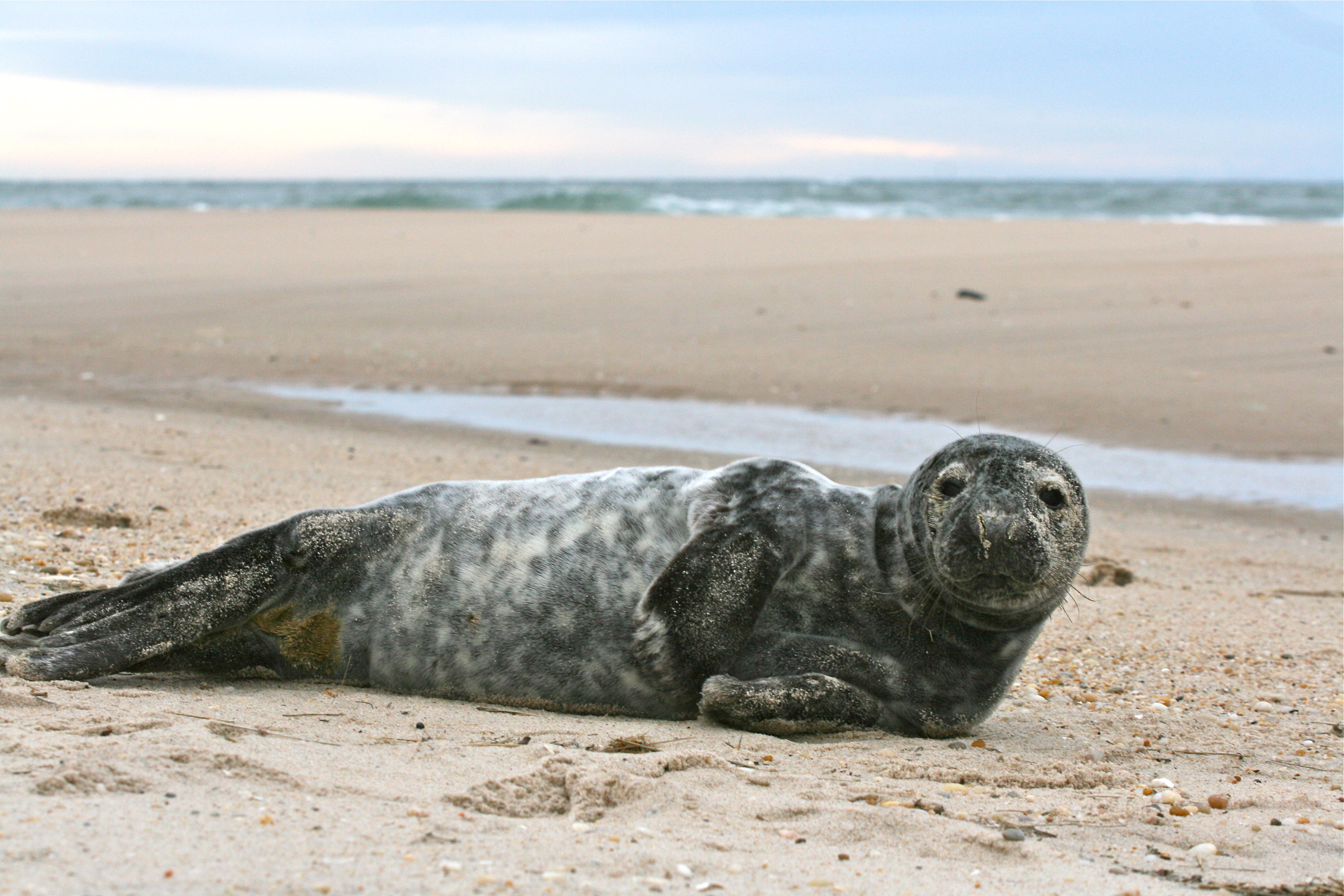
And, as turtle season ends in January and early February, seal season begins with a fresh set of challenges.
“Once we get these turtles all in and we think we have a break, we go right into our seal season, so in a few months we’ll be completely full of both species, which will be crazy on our end,” Montello says, pointing out that seals use the same hotline number as the turtles.
Always call NYMRC at 631-369-9829 before doing anything, and give seals a wide berth.
Learn more at nymarinerescue.org.



